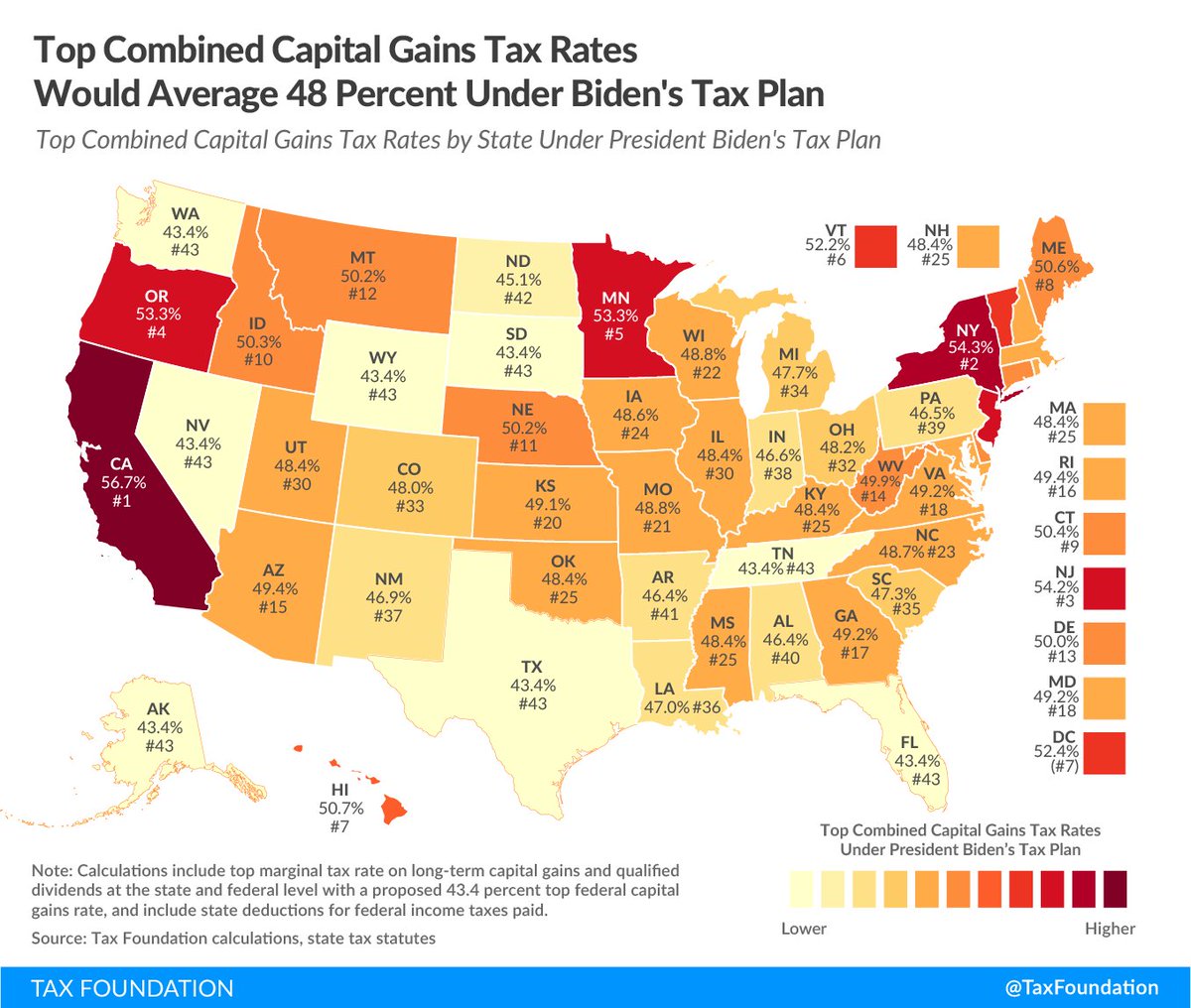
𝗪𝗵𝗮𝘁 𝗶𝘀 𝗮 𝗖𝗮𝗽𝗶𝘁𝗮𝗹 𝗚𝗮𝗶𝗻𝘀 𝗧𝗮𝘅?
A capital gains tax is levied on the profit made from selling an asset and is often in addition to corporate income taxes, frequently resulting in double taxation.
taxfoundation.org/tax-basics/cap…
A capital gains tax is levied on the profit made from selling an asset and is often in addition to corporate income taxes, frequently resulting in double taxation.
taxfoundation.org/tax-basics/cap…

Capital gains taxes create a bias against saving, leading to a lower level of national income by encouraging present consumption over investment.
taxfoundation.org/capital-gains-…
taxfoundation.org/capital-gains-…
Capital assets generally include everything owned and used for personal purposes, pleasure, or investment, including stocks, bonds, homes, cars, jewelry, and art.
The purchase price of a capital asset is typically referred to as the asset’s basis. When the asset is sold at a price higher than its basis, it results in a capital gain; when the asset is sold for less than its basis, it results in a capital loss.
Although capital gains taxes apply to the returns from any capital asset, including housing, homeowners benefit from a generous exemption for gains resulting from the sale of their primary residence, set at $250,000 for single filers ($500,000 for joint filers).
In the United States, when a person realizes a capital gain, they face a tax on that gain. Capital gains tax rates vary depending on two factors: how long the asset was held and the amount of income the taxpayer earns.
If an asset was held for less than one year and then sold for a profit, it is classified as a short-term capital gain and taxed as ordinary income.
If an asset was held for more than one year and then sold for a profit, it is classified as a long-term capital gain. 

𝗜𝘀 𝗖𝗮𝗽𝗶𝘁𝗮𝗹 𝗜𝗻𝗰𝗼𝗺𝗲 𝗧𝗮𝘅-𝗔𝗱𝘃𝗮𝗻𝘁𝗮𝗴𝗲𝗱?
The tax treatment of capital income, such as from capital gains, is often viewed as tax-advantaged. In practice, however, the opposite is true.
The tax treatment of capital income, such as from capital gains, is often viewed as tax-advantaged. In practice, however, the opposite is true.
When capital gains accrue from stock holdings, they represent a second layer of tax, as corporate earnings are already subject to corporate income taxes. 

Capital gains taxes affect more than just shareholders; there are repercussions across the entire economy.
When multiple layers of tax apply to the same dollar, reducing the after-tax return to saving, taxpayers are incentivized to consume immediately rather than save.
When multiple layers of tax apply to the same dollar, reducing the after-tax return to saving, taxpayers are incentivized to consume immediately rather than save.
Since capital gains are only taxed when realized, taxpayers can choose when to pay, which makes capital income more responsive to tax changes than other income types.
Higher capital gains taxes cause investors to sell assets less frequently, leading to less taxes being assessed.
Higher capital gains taxes cause investors to sell assets less frequently, leading to less taxes being assessed.

• • •
Missing some Tweet in this thread? You can try to
force a refresh









